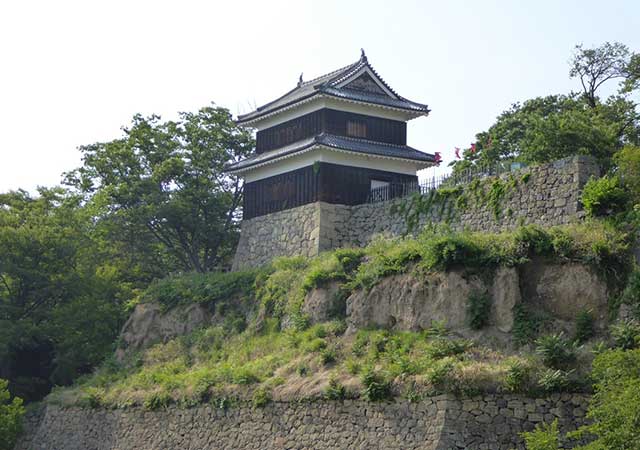
Ueda Castle in Nagano Prefecture once stood prominently on a cliff overlooking the Saigawa River. Also known as Amagafuchi-Jo, Isesaki-Jo, Matsuo-Jo, and Sanada-Jo, it was built around 1583 by its first master, Sanada Masayuki. This sturdy yet small fortress cleverly utilized the surrounding natural defenses, including the river, steep rocky cliffs, the layout of the town below, and the strategically designed waterways to hinder attackers. Ueda Castle was fortified with seven defensive yagura (watchtowers) atop robust stone walls and had two large gates with watchtowers above them.
Ueda Castle is renowned for having repelled the powerful Tokugawa clan twice. The first siege occurred from August to December 1585 when 7,000 Tokugawa troops faced 2,000 Sanada defenders. The second defense was in 1600, just before the Battle of Sekigahara, where 2,500 Sanada samurai held off 38,000 Tokugawa warriors led by Tokugawa Hidetada.
In the Battle of Kami River, Sanada Masayuki lured the Tokugawa attackers close to the castle before ambushing them with a reserve army. The Tokugawa forces, confused and unable to recover, hastily retreated. Support from the powerful Uesugi clan of Echigo further deterred the Tokugawa, solidifying Sanada Masayuki's reputation. In 1600, Hidetada's siege delayed his arrival at Sekigahara, causing his father, Tokugawa Ieyasu, great frustration as Hidetada arrived hours after the battle had ended.
Following the Battle of Sekigahara, Sanada Masayuki and his son, Yukimura (Nobushige), were exiled to a temple on Mount Koya. Tokugawa Ieyasu gave Ueda Castle to Sanada Nobuyuki but ordered its destruction. Nobuyuki complied after moving to nearby Matsushiro Castle. In 1622, daimyo Sengoku Tadamasa began rebuilding Ueda Castle, restoring the moats and the central Honmaru and Ni-no-Maru baileys. Although the seven yagura watchtowers and two main gates were completed, further construction ceased upon Sengoku's death. The current three yagura date from Sengoku Tadamasa’s period. The Sengoku clan ruled the castle from 1622 to 1706, followed by the Matsudaira (Fujii) clan until 1872.
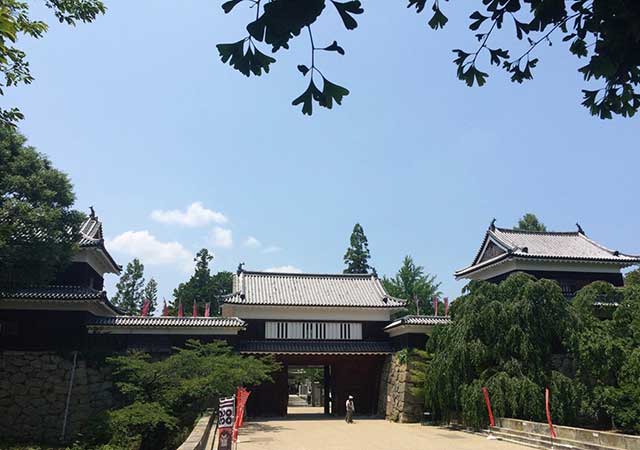
In 1871, Ueda Castle was abandoned, and three years later, its grounds and remaining structures were auctioned off. The Nishi Yagura watchtower remained, while the North and South Yagura were dismantled, moved to the outskirts of town, and used as a brothel. Later sold to a restaurant in Tokyo, these two yagura were eventually bought by Ueda citizens and returned to the castle's stone walls in 1949. The fate of the remaining four original watchtowers is unknown.
In 1927 and during later excavations, it was discovered that Ueda Castle's roof tiles were gilded in gold. Evidence of golden shachihoko (tiger-fish roof ornaments) was also found. Gilded roof tiles were common in larger castles like Oda Nobunaga’s Azuchi Castle and Toyotomi Hideyoshi’s Fushimi and Osaka Castles, but rare for a smaller castle like Ueda.
In 1994, the main Yagura-Mon gate was reconstructed, 110 years after the original was dismantled. Near the gate is the Sanada Ishi, a massive rock measuring 2.5 x 3 meters, built into the stone rampart. Such large rocks were a display of the lord’s power and wealth. A well by the Sanada Shrine within the castle grounds is believed to have been a secret tunnel leading out to the north of the castle.
From 1929, the West Yagura served as a museum featuring the Matsudaira family treasures, including weapons, armor, and manuscripts. The Ni-no-Maru now houses the Ueno City Museum, displaying an impressive collection of samurai armor and weapons. Ueda High School stands on the site of the Honmaru Goten palace, with the moats and gate now serving the school.
Nagano Prefecture’s Ueda Castle, though small, holds significant historical importance and remains one of the most popular samurai castles to visit.
See also
-
Kokura Castle
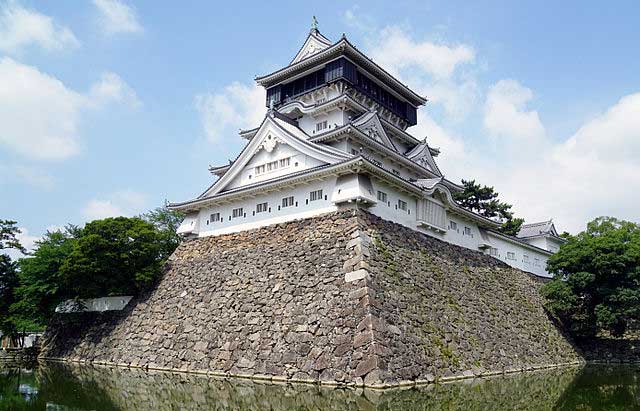
Kokura Castle is traditionally considered to have been founded by Hosokawa Tadaoki (1563–1645), although by the time the Hosokawa clan came to control these lands, the fortification had already existed since at least 1569 and was most likely built by members of the Mori clan.
-
Ikeda Castle
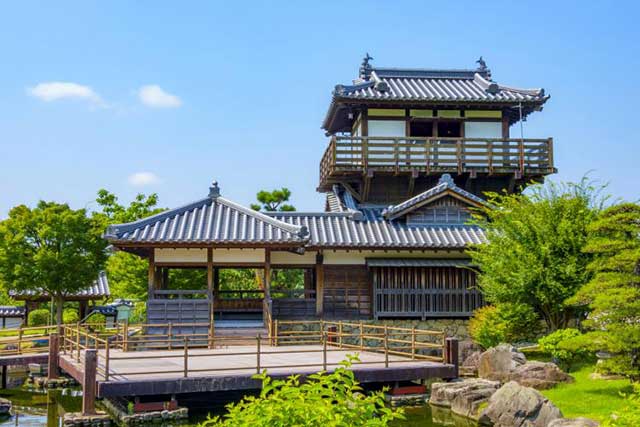
In 1334, Ikeda Noriyoshi built a small fort on this site, which over time was repeatedly expanded and rebuilt. During the Ōnin War of 1467–1477, the Ikeda clan supported the Western Coalition. As a result, Ikeda Castle was attacked and captured by the forces of the Eastern Coalition, but it was soon recaptured, allowing it to avoid serious destruction.
-
Aizu-Wakamatsu Castle
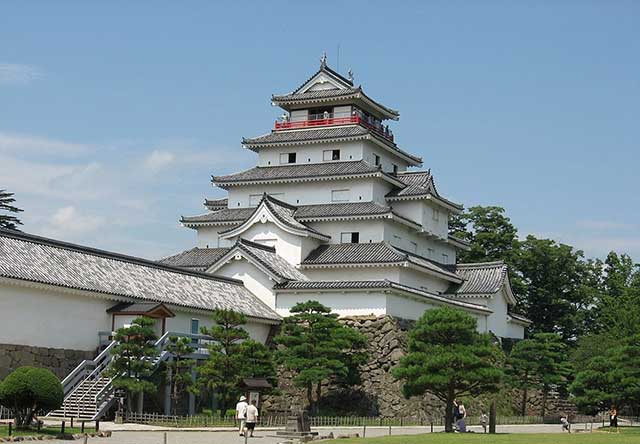
Aizu-Wakamatsu is the most powerful and at the same time the oldest castle in the Tōhoku region in the north of Honshu Island. Its history begins in the 14th century and is closely connected with the Ashina clan, whose members claimed descent from the legendary Taira family.
-
Maruoka Castle
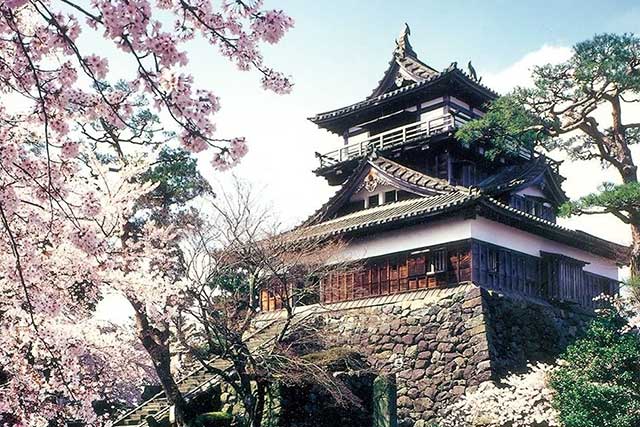
Maruoka Castle is located in the central part of the former city of Maruoka, which is now part of the city of Sakai. This area lies in the northeastern part of Fukui Prefecture. The castle was built on the bank of the Kuzuryu River, on the side opposite Fukui City, which once served as the administrative center of the former Echizen Province. Thanks to its location, Maruoka held significant strategic importance, as it controlled two major routes at once: the Hokurikudo highway leading from Kaga Province and the Mino Kaido road connecting these lands with Mino Province.
-
Marugame Castle
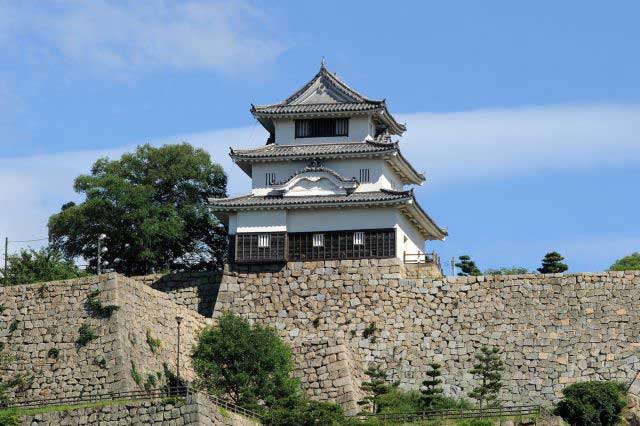
Marugame is part of the so-called “Authentic Dozen,” a group of twelve castles whose donjons have survived to the present day without major reconstructions since the Edo period.
-
Iyo Matsuyama Castle
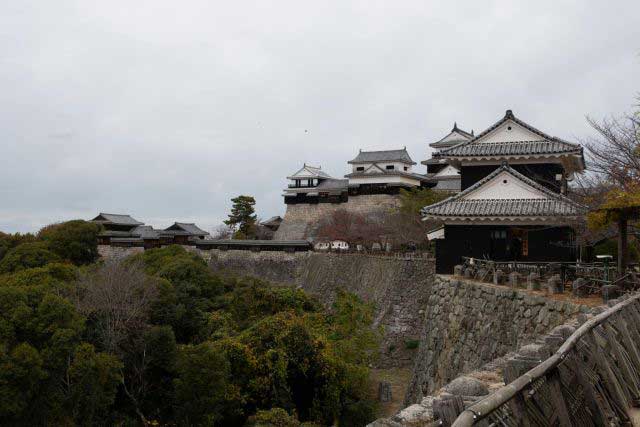
Historically, the center of Iyo Province—corresponding to today’s Ehime Prefecture on the island of Shikoku—was the city of Imabari, while the Matsuyama area was regarded as an agricultural hinterland with broad plains and low hills. During the Muromachi period, the central part of the province was governed by the Kano clan from Yuzuki Castle. With the onset of the Sengoku period, however, this clan lost its former influence and was forced to survive in the shadow of the more powerful Mori and Chōsokabe clans. After Toyotomi Hideyoshi’s forces conquered Shikoku in 1587, the northern part of Iyo Province was granted to Fukushima Masanori, one of the so-called “Seven Spears of Shizugatake.” In 1595, Masanori was transferred to Kiyosu Castle, and the lands around Matsuyama were given to another of the Seven Spears, Katō Yoshiaki, who received Masaki Castle and an income of 60,000 koku of rice.
-
Kanazawa Castle
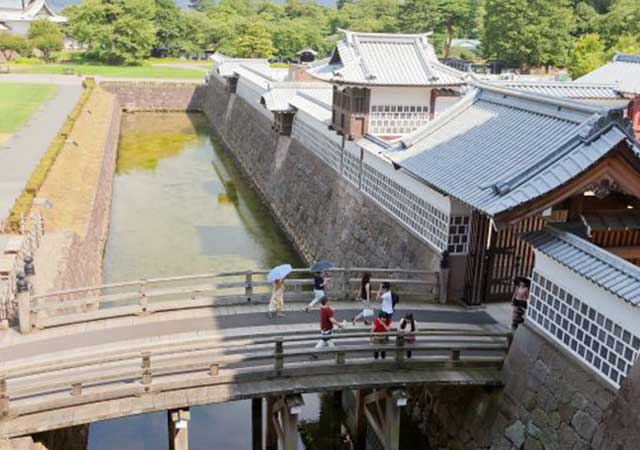
Construction of Kanazawa Castle began in 1580 on the orders of Sakuma Morimasa, a vassal of Oda Nobunaga. The castle was built on the site of the Ikko-ikki sect's Oyama Gobo temple, which is why it is sometimes called Oyama Castle. Morimasa managed to build several moats and begin construction of a castle town. However, after his defeat at the Battle of Shizugatake in 1583, he was executed, and ownership of the castle passed to Maeda Toshiie (1538–1599).
-
Nakatsu Castle
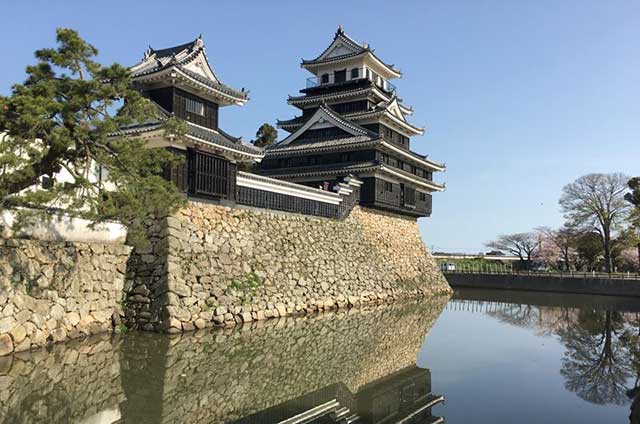
Kuroda Yoshitaka (1546–1604) was one of the closest advisors to the legendary military commander Toyotomi Hideyoshi. He took part in key military campaigns of the late 16th century, including the campaign against Shikoku in 1585 and the campaign against Kyushu in 1587. Later, during the second campaign in Korea, Yoshitaka served as chief advisor to the commander of the invasion forces, Kobayakawa Hideaki. After Hideyoshi's death, he swore allegiance to Tokugawa Ieyasu, thereby securing his influence and patronage under Japan's new leader.

